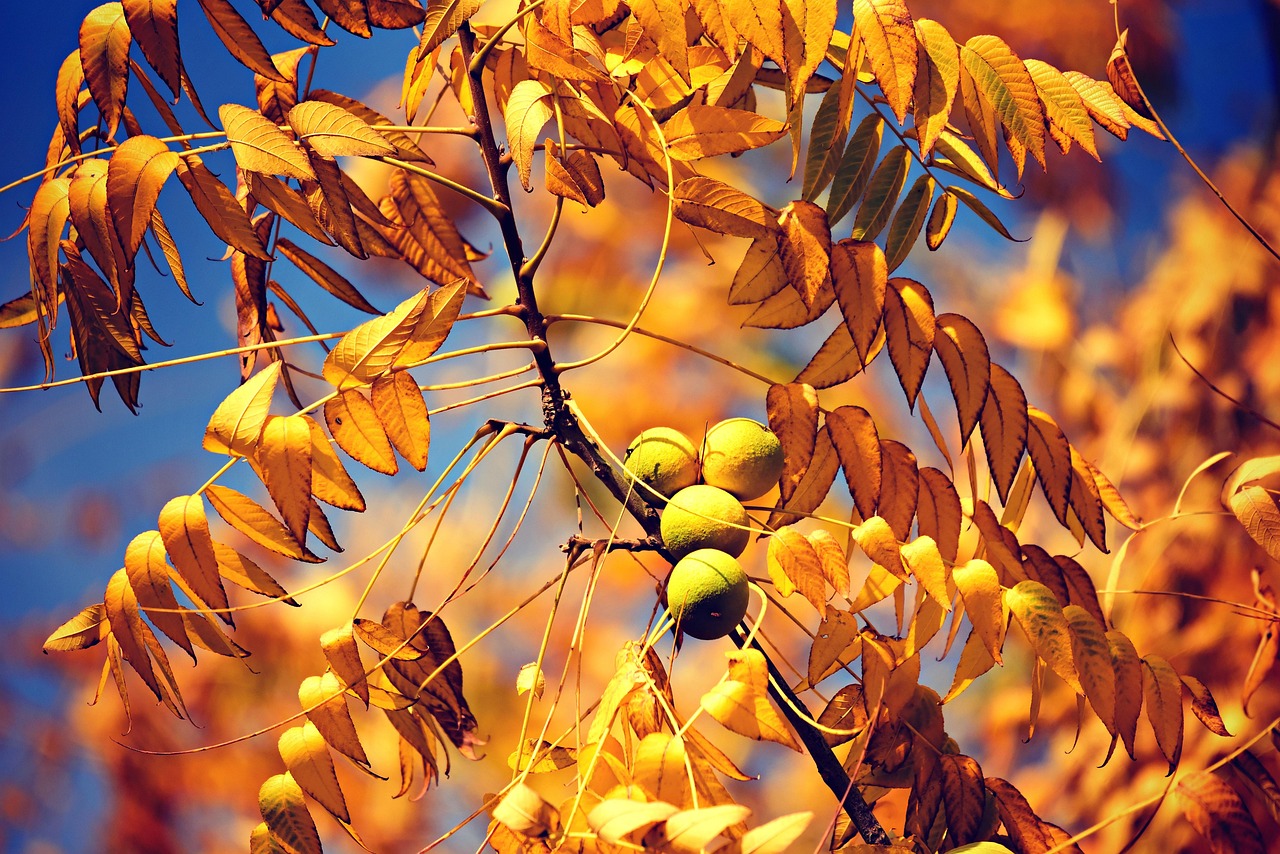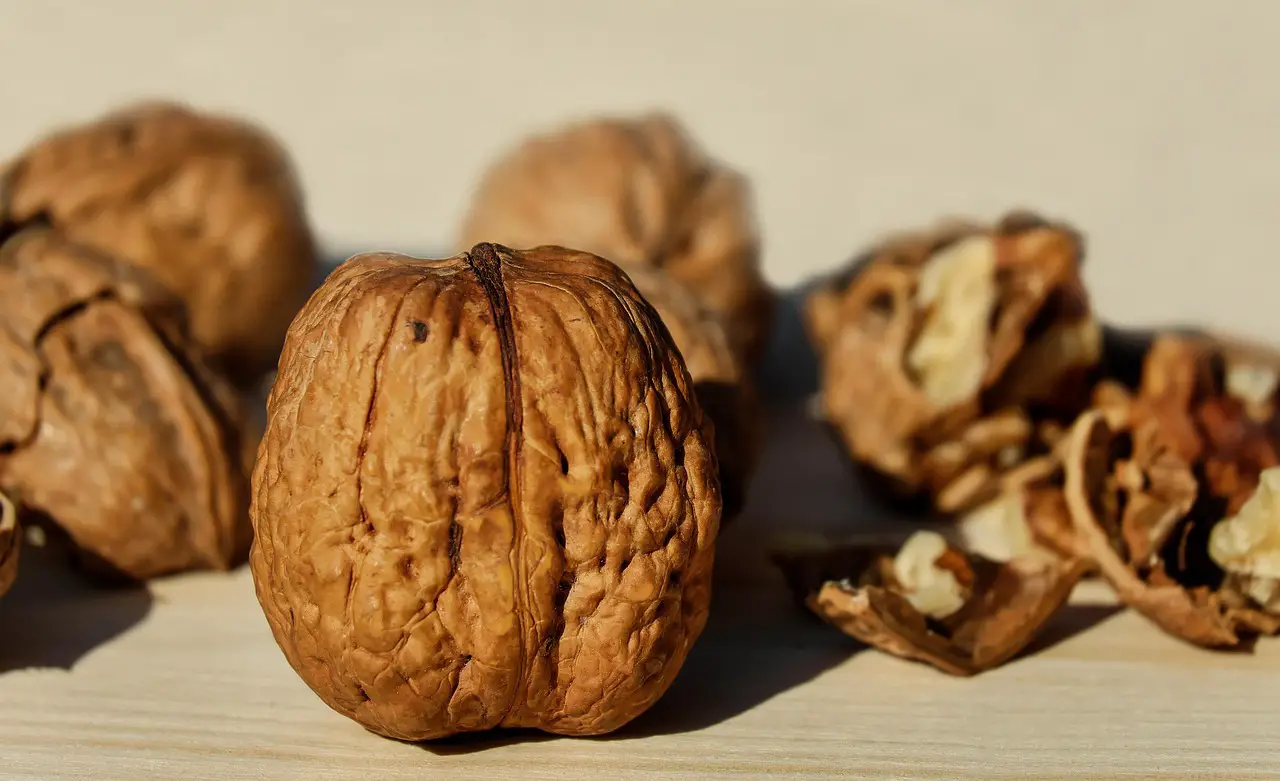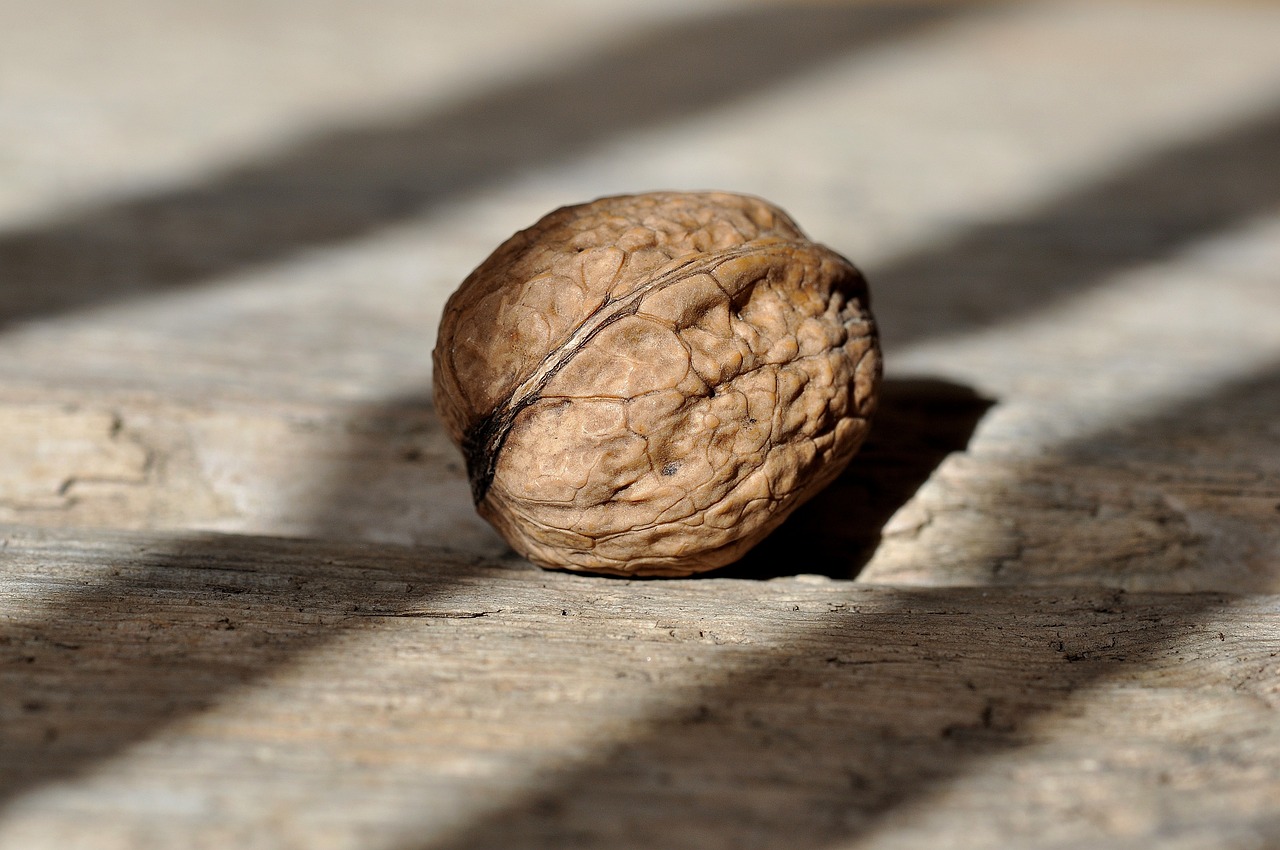Walnut trees are remarkable specimens that have captivated people for centuries. Their majestic height and beautiful foliage make them a popular choice for landscapes and gardens. Beyond their aesthetic appeal, walnut trees also bear delicious nuts that are highly sought after for their nutritional benefits and culinary uses. In this article, we will explore the various types of walnut trees, their bark characteristics, and the unique features of their leaves.
Originating from regions of North America, Europe, and Asia, walnut trees belong to the Juglandaceae family. There are several species of walnut trees, each with its own distinct characteristics. These trees can thrive in diverse climates, making them adaptable to different environments. Notably, they can grow quite large, with some varieties reaching heights of over 100 feet.

The most commonly known species include the English walnut (Juglans regia) and the black walnut (Juglans nigra). The English walnut is renowned for its smooth, light-colored nuts that are often used in baking and cooking. In contrast, the black walnut produces a darker, richer nut that has a stronger flavor and is favored for use in specialty foods and desserts.
| Species | Scientific Name | Common Uses |
|---|---|---|
| English Walnut | Juglans regia | Cooking, baking, oil production |
| Black Walnut | Juglans nigra | Culinary uses, wood products |
| California Walnut | Juglans hindsii | Hybrid breeding, landscaping |
One fascinating aspect of walnut trees is their bark. The texture and color of the bark can vary significantly between species. For example, the black walnut tree features dark, deeply furrowed bark that can appear almost black or gray-brown. This rugged appearance is not just for looks; it helps protect the tree from pests and harsh weather conditions.
On the other hand, the English walnut has smoother, lighter gray-brown bark that becomes more fissured as the tree matures. The differences in bark not only help identify the species but also provide insight into their growth habits and resilience.
Understanding Walnut Leaves
The leaves of walnut trees are another distinctive feature worth examining. They are typically compound leaves, meaning they consist of multiple leaflets arranged along a central stem. A single leaf can have anywhere from five to twenty-five leaflets, depending on the species.
The leaflets of the English walnut are generally narrow and elongated, providing a delicate appearance. They are a bright green in color during the growing season and turn a beautiful yellow in the fall. In contrast, black walnut leaves tend to be larger and more robust, with a darker green shade that can also turn yellow before dropping in autumn.
In addition to their visual appeal, walnut leaves serve practical purposes. They provide shade and habitat for various wildlife species. Moreover, when they fall to the ground, they decompose and enrich the soil with nutrients.
Walnut trees are not just beautiful; they play an essential role in ecosystems. They contribute to biodiversity and provide resources for both humans and wildlife alike. Understanding these trees’ types, bark characteristics, and leaves can enhance our appreciation for their significance in nature.
Growth Habits and Cultivation of Walnut Trees
Walnut trees thrive in well-drained soils and prefer full sunlight. Understanding their growth habits is essential for successful cultivation. These trees can be grown in various climates, but they generally favor temperate regions. They are sensitive to extreme temperatures, particularly late frosts that can damage young buds.
When planting walnut trees, consider the following factors:
- Soil Quality: Walnut trees prefer loamy or sandy soils that are rich in organic matter. Compacted or waterlogged soils can hinder their growth.
- Sunlight: These trees require at least six to eight hours of direct sunlight per day to flourish.
- Spacing: When planting multiple walnut trees, maintain adequate spacing of at least 30 to 40 feet between each tree to promote healthy growth and airflow.
- Watering: Young walnut trees need regular watering, especially during dry spells. However, they do not tolerate standing water, so ensure proper drainage.
Propagation Methods
Walnut trees can be propagated through various methods, including seed, grafting, and transplanting. Each method has its advantages depending on the desired outcome.
- Seed Propagation: This is the most common method, where seeds from mature nuts are collected and planted. It is essential to stratify the seeds by exposing them to cold temperatures for a period before planting.
- Grafting: This technique involves attaching a cutting from a desirable tree variety to a rootstock. Grafting allows for quicker fruit production and maintains specific traits of the parent tree.
- Transplanting: Young trees can be purchased from nurseries and transplanted into gardens or orchards. This method allows for immediate planting without waiting for seeds to germinate.
Pests and Diseases

Like all plants, walnut trees are susceptible to various pests and diseases. Recognizing these threats early can help protect the health of the tree.
Common Pests
Some of the most common pests that affect walnut trees include:
- Walnut Husk Fly: This insect lays eggs in the husk of developing nuts. The larvae feed on the nut, leading to reduced quality.
- Webworm: These caterpillars create webs in the foliage, which can weaken the tree if left unchecked.
- Scale Insects: These pests suck sap from the tree, potentially leading to reduced vigor and growth.
Diseases
Walnut trees can also suffer from several diseases. Some notable ones include:
- Walnut Anthracnose: A fungal disease that causes dark spots on leaves and can lead to leaf drop.
- Root Rot: Caused by overwatering or poor drainage, this disease affects the roots and can lead to tree decline.
- Bacterial Canker: This disease results in sunken areas on the bark and can harm the overall health of the tree.
Proper care and maintenance practices can mitigate many of these issues. Regular monitoring for signs of pests and diseases is essential for maintaining healthy walnut trees.
Nutritional Benefits of Walnut Trees

The nuts produced by walnut trees are not only delicious but also packed with nutritional benefits. They are rich in healthy fats, antioxidants, and essential vitamins.
The key nutritional components include:
- Omega-3 Fatty Acids: These healthy fats are beneficial for heart health and brain function.
- Antioxidants: Walnuts contain powerful antioxidants that help combat oxidative stress in the body.
- Vitamins and Minerals: They are a good source of vitamin E, magnesium, and phosphorus, all of which contribute to overall health.
Incorporating walnuts into your diet can contribute significantly to your nutritional intake while adding flavor and texture to various dishes.

Culinary Uses of Walnuts
Walnuts are not only nutritious but also versatile in the kitchen. Their rich flavor and crunchy texture make them a popular ingredient in a variety of dishes. Chefs and home cooks alike appreciate the unique taste walnuts bring to both sweet and savory recipes.
In Baking
Walnuts are frequently used in baking, adding depth and flavor to many desserts. Here are some common baked goods that benefit from the inclusion of walnuts:
- Brownies: Chopped walnuts can enhance the fudgy texture and add a delightful crunch.
- Cookies: Adding walnuts to chocolate chip cookies creates a satisfying contrast in texture.
- Breads: Incorporating walnuts into banana bread or zucchini bread provides added nutrition and flavor.
In Salads
Walnuts can elevate salads with their crunchy texture and nutty flavor. They pair well with various ingredients, making them a popular choice for salad enhancers. Consider these combinations:
- Mixed Greens: Tossing walnuts with mixed greens, goat cheese, and a vinaigrette creates a refreshing salad.
- Fruit Salads: Adding walnuts to fruit salads introduces a savory element that balances sweetness.
- Grain Salads: Walnuts complement grain salads, such as quinoa or farro, providing texture and healthy fats.
Walnut Oil: A Gourmet Ingredient
Walnut oil is another valuable product derived from walnuts. It is celebrated for its rich flavor and health benefits. This oil is often used in culinary applications for several reasons:
- Flavor Enhancer: Walnut oil has a distinct, nutty flavor that can enhance salads, pasta dishes, and marinades.
- Health Benefits: Like whole walnuts, walnut oil is rich in omega-3 fatty acids and antioxidants, making it a heart-healthy choice.
- Low Smoke Point: Due to its low smoke point, walnut oil is best used in dressings or as a finishing oil rather than for high-heat cooking.
Health Benefits of Regular Walnut Consumption
Incorporating walnuts into your diet offers numerous health benefits beyond their nutritional value. Research has shown that consuming walnuts can positively impact various aspects of health:
Heart Health
Regular walnut consumption is associated with improved heart health. The beneficial fats in walnuts help reduce bad cholesterol levels while increasing good cholesterol levels. Additionally, walnuts can help lower blood pressure and improve overall vascular function.
Brain Function
The omega-3 fatty acids found in walnuts are crucial for brain health. Studies suggest that these fats can enhance cognitive function and may even reduce the risk of neurodegenerative diseases. Including walnuts in the diet may support memory and cognitive abilities.
Weight Management
Despite being calorie-dense, walnuts can aid in weight management. Their high fiber content promotes satiety, helping to control appetite. This makes them an excellent snack option for those looking to maintain or lose weight.
Environmental Impact of Walnut Trees
Walnut trees play a significant role in the environment beyond their culinary uses. They contribute to ecosystem sustainability in various ways:
- Biodiversity: Walnut trees provide habitat for diverse wildlife species, supporting local ecosystems.
- Carbon Sequestration: Like all trees, walnut trees absorb carbon dioxide from the atmosphere, helping mitigate climate change.
- Soil Health: The fallen leaves and husks enrich the soil, promoting nutrient cycling and improving soil quality.
Understanding the environmental benefits of walnut trees further emphasizes their importance beyond mere aesthetics or culinary uses.
Challenges in Walnut Tree Cultivation
While walnut trees offer numerous benefits, cultivating them is not without challenges. Understanding these challenges can help growers implement better management practices.
Climate Sensitivity
Walnut trees are sensitive to climatic conditions. They require specific temperature ranges for optimal growth. Late frosts can damage blossoms, affecting nut production. Moreover, extreme heat during the growing season can stress the trees, leading to reduced yields.
Pest and Disease Management
As discussed earlier, walnut trees are susceptible to various pests and diseases. Integrated pest management (IPM) strategies are essential for maintaining tree health. This includes:
- Regular Monitoring: Regularly inspecting for signs of pests and diseases can help catch issues early.
- Cultural Practices: Implementing proper watering and fertilization techniques can improve tree resilience against pests and diseases.
- Biological Control: Introducing natural predators of pests can help manage populations without chemical interventions.
The Economic Importance of Walnuts
The walnut industry plays a crucial role in the economy of many regions. Walnut production supports jobs in agriculture, processing, and distribution. The global demand for walnuts continues to grow as more people recognize their health benefits.
Regions known for walnut production, such as California in the United States, contribute significantly to both local and national economies. The economic impact can be summarized as follows:
- Job Creation: Walnut farming and processing create numerous employment opportunities in rural areas.
- Export Opportunities: Many countries export walnuts, contributing to trade balances and bringing revenue to local economies.
- Support for Local Businesses: The walnut industry supports various ancillary businesses, including transportation, retail, and food production.
Future of Walnut Trees
The future of walnut trees looks promising, with ongoing research focusing on improving cultivation practices and developing disease-resistant varieties. Advancements in agricultural technology and practices will likely enhance yields and sustainability.
Furthermore, as consumers increasingly prioritize healthy eating, the demand for walnuts is expected to rise. This trend may lead to more innovative uses of walnuts in food products, further integrating them into modern diets.
Final Thoughts
Walnut trees are remarkable not only for their delicious nuts but also for their ecological contributions and economic significance. Understanding the different types of walnut trees, their bark and leaves, and the various benefits they provide can enhance our appreciation of these beautiful trees.
From culinary applications to environmental impacts, walnuts offer a wealth of advantages that extend beyond mere consumption. As we look to the future, continued efforts in cultivation, pest management, and research will ensure that walnut trees remain a vital part of our ecosystems and economies.
In summary, whether you are a chef looking for unique ingredients or a gardener considering planting walnut trees, recognizing their multifaceted value will enrich your experience and understanding of this extraordinary species.
